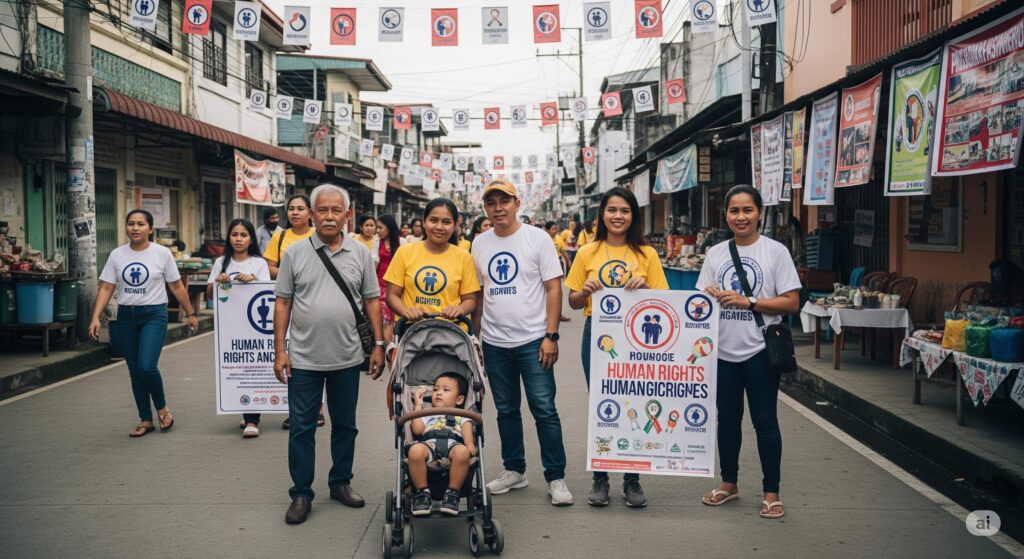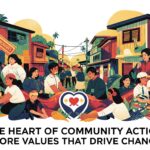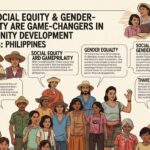Hey, human rights hero! Let’s learn how to make sure everyone knows their rights—because knowledge is power! 🌍✨
Step 1: Icebreaker – What Are Human Rights?
💬 Quick Think:
Name one right you believe every person deserves.
(Example: “Freedom of speech!” or “Safe housing!”)
💡 Definition:
Human rights = basic freedoms everyone deserves, no matter who they are . Think of them as the “rules” for treating people with dignity.
Step 2: Why Awareness Matters
🌟 The Problem:
Many people don’t know their rights (e.g., right to education, healthcare, or freedom from discrimination). This makes it easy for rights to be violated.
🌍 Example:
In some communities, girls drop out of school because they don’t know education is their right .
Step 3: How to Promote Awareness – Your Toolkit
1. Educate Through Art & Storytelling
- Street Theater : Act out stories of rights violations (e.g., a girl denied school) and solutions.
- Posters/Murals : Use bold visuals with slogans like “Know Your Rights!” in local languages.
🎨 Activity Idea:
Design a poster explaining one human right (e.g., “Everyone deserves clean water!”).
2. Partner with Local Leaders
- Barangay Workshops : Train elders, teachers, or pastors to teach rights in their networks.
- Collaborate : Team up with NGOs like Amnesty International or Karapatan for resources.
💡 Pro Tip:
Use local dialects to make info accessible. No jargon—keep it simple!
3. Leverage Tech & Media
- Social Media : Share short videos (e.g., “5 Rights You Didn’t Know You Had!”).
- Radio/Podcasts : Host a segment on rights in your community.
📱 Example:
A TikTok challenge where people act out their right to vote or protest.
4. Legal Literacy Clinics
- Free Workshops : Invite lawyers to explain rights and how to report violations.
- Pocket Guides : Distribute booklets with emergency hotlines (e.g., anti-violence helplines).
⚖️ Real-Life Example:
In Cebu, a group holds “Legal Aid Sundays” to help workers file labor complaints.
5. Celebrate Human Rights Days
- December 10 (Human Rights Day) : Host a community fair with games, talks, and food.
- March 8 (Women’s Day) : Highlight gender equality and women’s rights.
🎉 Activity Idea:
Organize a “Rights Quiz” with prizes (e.g., reusable bags, snacks).
Step 4: Overcome Challenges
⚠️ Common Hurdles:
- Distrust : Some fear reporting violations.
- Language Barriers : Info isn’t in local dialects.
- Apathy : “Why care? Nothing changes.”
💡 Solutions:
- Build Trust : Partner with respected community members.
- Make It Relatable : Use stories, not just laws.
- Show Progress : Share wins (e.g., “Last year, we stopped 10 evictions!”).
Step 5: Case Study – The Lumad People
🌍 Indigenous Rights in Mindanao:
- Problem : Lumad communities face land grabs and violence.
- Action : Youth activists used social media to share stories, leading to global support.
- Result : Increased pressure on the government to protect Indigenous lands.
❓ Reflect:
How can you amplify voices like the Lumad in your community?
Step 6: Your Mission
🚀 Take Action:
- Today : Share one human right on social media (use #KnowYourRights).
- This Month : Host a “Rights Storytelling Night” with friends or neighbors.
- Long-Term : Advocate for human rights education in local schools.
💬 Final Thought:
“Human rights are not a privilege conferred by government. They are every human being’s entitlement by virtue of their humanity.” – Eleanor Roosevelt
You’re now a human rights ambassador! Go empower your community—one story, one workshop, one TikTok at a time. Questions? I’m here! 😊


